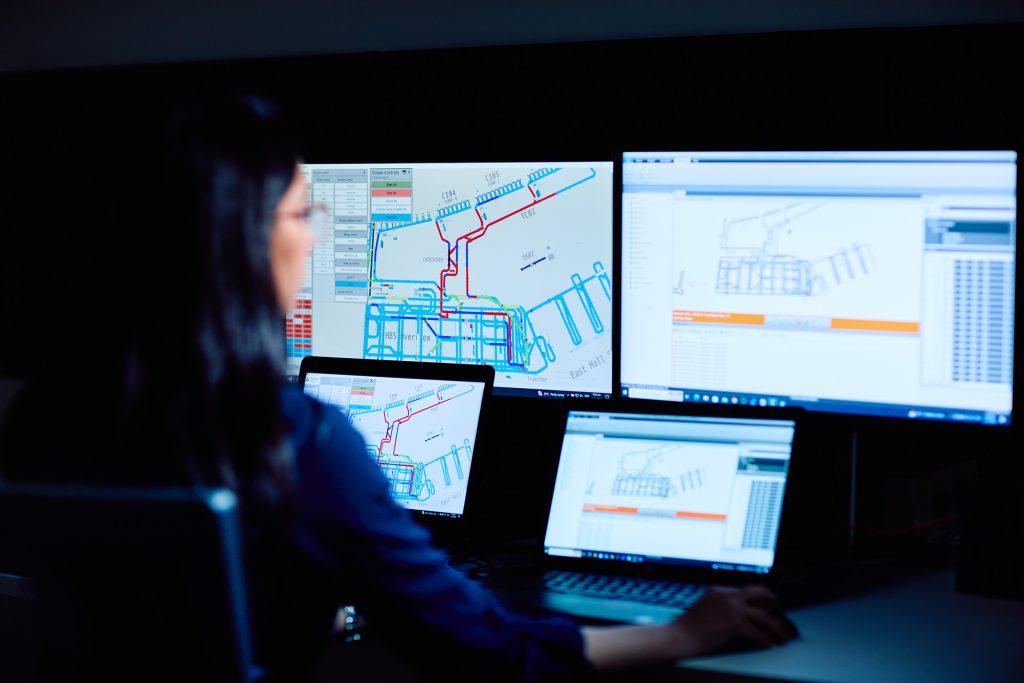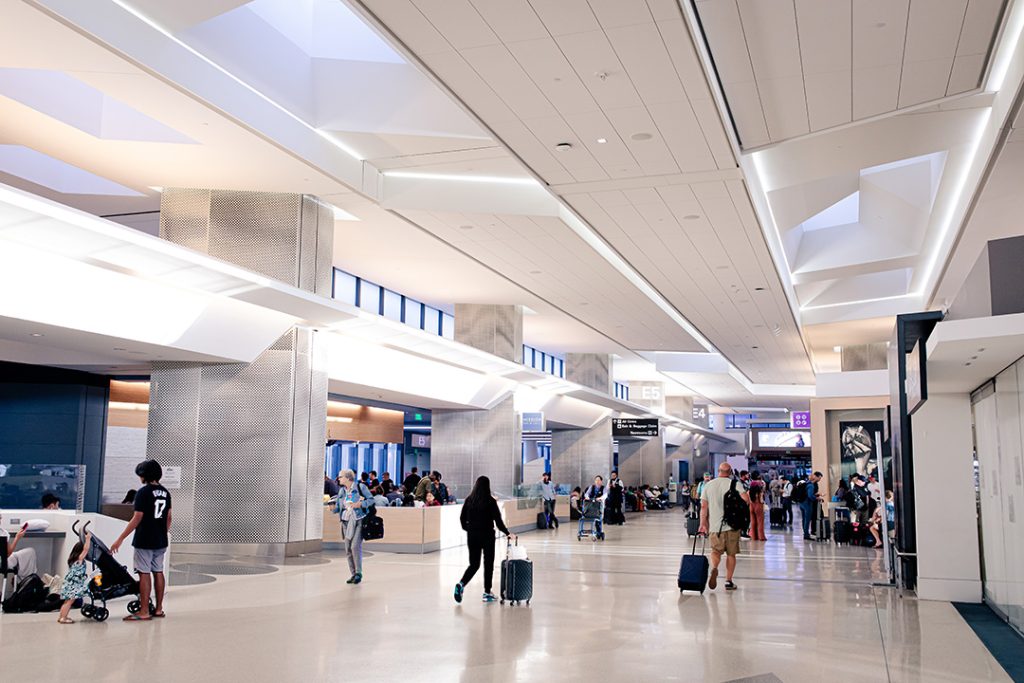Legacy Systems: The Shadow in Aviation Progress
Legacy systems represent one of the most foreboding barriers to technology adoption: the challenge of integrating new technologies within existing infrastructure. Many of these systems, dating back decades, lack the flexibility to adapt seamlessly to modern advancements. This challenge is amplified by the increasing complexity of airport operations and the critical role played by baggage handling, passenger processing, and security systems. So, how do we confront and overcome this prickly problem? Read on to learn more.

By Stu McGraw – General Manager Aviation, Daifuku Oceania
Integration Within Existing Infrastructure in the Aviation Industry
Legacy systems — when I hear this term, it conjures the soundtrack to a suspenseful thriller. There, they sit in the shadows, haunting the dreams of every innovator in the aviation industry. These systems represent one of the most foreboding barriers to technology adoption: the challenge of integrating new technologies within existing infrastructure.
Many of these systems, dating back decades, lack the flexibility to adapt seamlessly to modern advancements. This challenge is amplified by the increasing complexity of airport operations and the critical role played by baggage handling, passenger processing, and security systems.
It would appear I’m not alone in feeling the chill of this daunting task. According to a 2024 report on Baggage IT Insights, 46% of airports cite “integration challenges with legacy systems” as a significant hurdle.
So, how do we confront and overcome this prickly problem? Let’s unfurl the layers of this issue and explore the solutions that can help the aviation industry move forward.
The Legacy System Challenge
Airports worldwide rely on legacy systems designed in an era when aviation technology was far less interconnected. These systems were engineered to handle singular tasks, such as baggage sorting, flight scheduling, or passenger check-ins, without foresight into today’s demand for cross-functional data sharing.
Meanwhile, the aviation industry has evolved into a complex web of interconnected systems, including baggage handling, biometric identification, self-service kiosks, and real-time analytics dashboards.
This evolution has exposed several challenges inherent in legacy systems:
- Compatibility Issues: Older systems often use outdated communication protocols, making integration with modern solutions cumbersome or outright impossible.
- Data Silos: Legacy systems frequently operate in isolation, impeding the seamless flow of data across departments and stakeholders.
- Cost of Upgrades: Replacing or upgrading legacy systems involves significant financial investment, personnel training, and the risk of operational disruption.
- Security Risks: Many older systems lack the cybersecurity features necessary to protect against modern threats, increasing vulnerability across the airport ecosystem.
Innovative Solutions for Integration
The aviation industry’s path to modernisation requires bridging the gap between legacy systems and cutting-edge technologies. At Daifuku, we are at the forefront of this effort, offering solutions that ensure smoother transitions and enhanced operational efficiency.
To provide a clear vision for integration, we must address the following questions:
- Strategic Approach to Upgrades: A full system overhaul may not always be the best approach. Instead, a phased integration strategy allows airports to modernise critical components while minimising disruption. Prioritising high-impact areas ensures steady progress without overwhelming operational capacity.
- Pragmatic Progress Over Perfection: Waiting for the perfect solution is not feasible or often not advisable. Incremental improvements provide immediate benefits while setting the stage for future enhancements. By adopting an agile mindset, we help airports embrace practical innovations that drive meaningful results without unnecessary delays.
- Unified Data Sources for Enhanced Decision-Making: Airports generate vast amounts of data across multiple systems. By integrating these into a single, cohesive data source, we enable better decision-making, improve operational efficiencies, and enhance the passenger experience.
- Ensuring System Compatibility and Long-Term Integration: Daifuku supports a range of legacy and modern systems, ensuring smooth integration without the need for complete infrastructure replacement. We employ middleware solutions and modular upgrades to extend the life of existing investments while adding new capabilities.
- Leveraging Key Technologies: Cloud technology, digital twins, and Airport Operations Systems (AOS), such as Daifuku’s award-winning Sym3 and rapidsuite solution, as well as predictive analytics, play crucial roles in modern airport infrastructure. By strategically implementing these tools, we enhance operational visibility, automate routine tasks, and improve overall efficiency.
- Industry-Wide Data Exchange: Enabling seamless data sharing across airports, airlines, and regulatory bodies requires standardised formats, interoperable platforms, and collaborative efforts. Through cloud-based hubs, middleware solutions, and participation in global aviation organisations, Daifuku ensures that integrated solutions contribute to industry-wide efficiency and collaboration.
- Proven Track Record Through Case Studies: Demonstrating the success of our solutions is crucial. We showcase real-world implementations where Daifuku has overcome integration challenges, illustrating tangible benefits and measurable improvements.
- Global Standards and Future-Proof Compatibility: By collaborating with international organisations and industry associations (such as IATA, ACI, and ICAO), we ensure our solutions align with global best practices, regulatory requirements, and future developments, safeguarding long-term viability.

Sym3
The Future of Airport Technology Integration
As airports grow and passenger expectations evolve, seamless technology integration will become increasingly critical. Emerging trends, such as biometrics, artificial intelligence, and autonomous systems, will further challenge the capabilities of legacy infrastructure.
Airports that proactively address integration challenges will be better positioned to meet these demands and deliver exceptional passenger experiences.
At Daifuku, our commitment is clear: we support airports on their journey of modernisation. By prioritising compatibility, scalability, and efficiency, we help our partners navigate integration complexities while minimising operational disruptions. Our solutions bridge the gap between the old and the new, enabling airports to embrace future technologies without compromising performance.
Integrating new technologies within existing aviation infrastructure may seem daunting, but it is far from insurmountable. With the right approach, innovative solutions, and a strategic approach, along with partners like Daifuku, the aviation industry can break free from the shadows of legacy systems and soar to new heights of efficiency and performance.
For more information about Daifuku’s projects and products, contact one of our Business Solutions Specialists today.
Related articles
Dec 02, 2025 • 6 min read
Regional Airports: The Unsung Disruptors of Aviation
Never miss an article
Subscribe to our newsletter and be the first in the know.
Join the conversation
For the latest industry articles and networking

